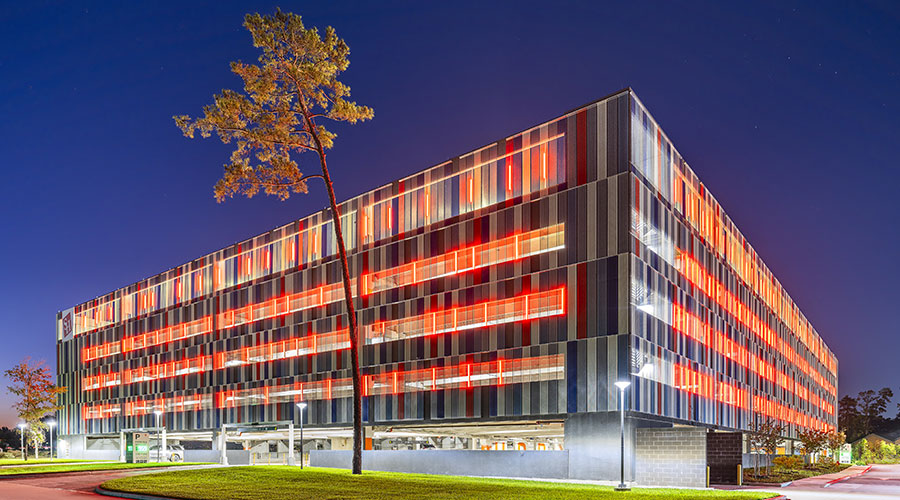Lamp Specification in a New Light
New lighting technology addresses facility challenges, but understanding key lamp characteristics is essential in making the ‘right’ choice
The success of a lighting system often depends on the ability of maintenance and engineering managers to specify the most effective lighting products for challenging areas of institutional and commercial facilities.
Whether the challenge is in a classroom, auditorium or public area, managers can streamline the process and help ensure success by using a systematic approach to lamp specification. Ideally, this process includes keeping abreast of lighting technology advances and considering lamp characteristics and specifications that can make or break lamp-buying decisions.
Technology Advances
How does a manager know which lamp type — bulb or tube — is best for a particular application? One way to identify potential solutions is to keep up to date on new products and evaluate their potential for reducing an organization's operating cost.
Are new lamps more beneficial than the ones now in use? Answering this question requires a review of new lamp products and their cost benefits. Managers can consider these recent technology advances:
- a 55-Watt, 3,500-lumen CFL in a 10-inch-long package to replace 200-Watt incandescent lamps
- a 65-Watt quad, 4,200-lumen CFL in an 11-inch-long package to replace 250-Watt incandescent lamps
- an 85-Watt quad, 5,500 lumens in an 11.8-inch package to replace 300-Watt incandescent lamps.
High-wattage compact fluorescent lamps (CFL). High-wattage, screwbase CFLs are coming on strong. New high-wattage lamps:
In addition to new screwbase models, several manufacturers also offer the new 57-Watt pinbase system with a four-pin, rapid-start quad lamp with a light output of 4,300 lumens. The system is powered by a separate electronic ballast and is available to OEM fixture manufacturers to incorporate into new downlight fixtures as a replacement for 200-Watt incandescent fixtures.
Both screwbase and pinbase high-wattage CFLs are intended for use in challenging, high-ceiling applications that often generate high maintenance costs. Energy savings result from the systems’ reduced wattage, and maintenance labor savings result from their longer life.
High-performance T8 systems. These lamps now are available with a higher energy efficiency — 22 percent — and the same light output as standard T8 systems. A dedicated program-start electronic ballast provides longer lamp life than standard systems. The average rated life is 30,000 hours, compared with 20,000 hours for rapid-start systems and 15,000 hours for instant-start systems.
The systems’ lower power results in energy savings, and longer life means lower maintenance labor costs. The higher-lumen, longer-life lamps also enable managers to install fewer total lamps initially because of fewer fixtures required, as well as over the life of the system because of longer lamp life.
Managers should carefully evaluate this technology. In some parts of the country, high-performance systems are so cost-effective that they are replacing standard T8 systems installed just a few years ago.
Lamp Characteristics and Costs
Lamp characteristics have a dramatic impact on lighting cost. A closer look at several key characteristics will give managers guidance in selecting the right lamp to meet their facilities’ requirements.
Average rated life. This statistical measure of lamp life is defined as the point at which 50 percent of a large group of lamps is still burning. Laboratory tests conducted according to prescribed strict standards and under controlled conditions determine the values published in lamp manufacturer catalogs.
Managers should not use average rated life values to forecast lamp replacements. Instead, they should use calendar life to calculate lamp change intervals. Calendar life measures both the time lamps are off, as well as the time they are on. This total service time affects the labor cost of replacing lamps, not average rated life.
For example, when 32-watt T8 fluorescent lamps operate continuously, they have an average rated life of about 37,000 hours and a calendar life of more than four years. When lamps operate continuously, calendar life and average rated life are equal.
But if lamps are off half the time, average rated life declines to 28,860 hours, while the calendar life extends to nearly seven years.
The bottom line is that fluorescent lighting systems can be turned off without shortening lamp life, and managers should not have to worry about increasing labor costs due to shortened lamp life.
Color rendering index. Managers can use the color rendering index (CRI) system to evaluate the effect of different light sources on the apparent color of objects and their surroundings. The higher a lamp’s CRI rating, the more realistic colors appear to building occupants and visitors.
Although color rendering affects lighting quality, managers should put CRI in perspective. For example, older T12 cool white lamps had a CRI of 62, and T12 warm white lamps had a CRI rating of only 53. T8 lamps are available in 75 or 85 CRI, and T5 lamps are available in 85 CRI.
So one important result from replacing older T12 lamps with T8 or T5 lamps is the quantum jump in CRI — as much as 32 points. This large increase in CRI can cause lamps to appear brighter than measurements would indicate, and it usually results in occupant complaints in areas where one-for-one replacements are made. The normal — though ill-advised — response to this situation by maintenance staffs is to remove a lamp.
The cost of lamps with higher CRI might be higher than of those with a lower CRI. But with the advent of high-performance T8 systems, managers need to revisit recommendations for CRI.
Until recently, 75 CRI was recommended for office and classroom applications, and 85 CRI was recommended for upscale applications, such as hotel lobbies and retail environments, where the appearance of displayed products affects sales. But high-performance T8 systems are only available with the higher CRI, and the advantages of these higher lumen lamps with longer life should far outweigh the additional cost of the system.
Lumens. Lamp lumen ratings measure total light output, and labels on packages must show these ratings. Lamps in service generally have lower light output because laboratory conditions are seldom found in actual practice. Initial lumens also are reduced by lamp lumen depreciation to the point where they eventually reach the required maintained, or design, light level.
Insufficient lamp lumens often are a major cause of low light levels. The lumen output of individual lamps determines the total number of lamps required. If individual lamp lumens are low or the total number of lamps is insufficient, then light levels will be inadequate.
Lumen maintenance. Lumen maintenance describes the rate at which lamps lose their ability to produce light. Also known as lumen depreciation, lumen maintenance is measured at 40 percent of rated life – the point that determines useful lamp life and design light levels.
One major advantage of T8 or T5 lamps over T12 lamps is their superior lumen maintenance. T8 or T5 lamps decline to about 92 percent of initial lumen output and then remain steady, while T12 lamps continue to decline for the remainder of their lives.
So managers who install lamps with superior lumen maintenance will have to replace fewer lamps over time, reducing maintenance costs.
Lamp efficacy. Measured in lumens per Watt (LPW), lamp efficacy is used to measure the efficiency of light sources. LPW measures the amount of light, in lumens, emitted for each Watt of power consumed. Higher efficiency lamps have higher LPW ratings.
Most importantly, LPW determines energy cost, the highest percentage of operating costs. Lamps of higher LPW ratings often can be cost justified, even when they cost more, because of the energy cost savings they generate. For example, because the LPW for incandescent lamps increases as the wattage goes up, staff should choose to use fewer high-wattage lamps than more low-wattage lamps to achieve the desired lumens. Just as with lumen ratings, LPW ratings must also be printed on lamp packages.
Color temperature. When managers buy 4-foot 32-W T8 lamps, there is a choice of color temperature — 3,000K, 3,500K, and 4,100K. The price is the same for any of these color choices, so price is not usually dependent on lamp color.
Managers should select lamps based on the products’ ability to perform effectively in facility applications, with particular attention paid to lumen output, efficacy and life ratings. Using higher efficacy lamps will reduce energy cost and longer life lamps will reduce labor cost. Prudent managers will keep informed about new products that can help them control facility lighting cost.
The Bottom Line on Lamps
When the task is lamp specification, the main issue facing maintenance and engineering managers is cost. Managers know that they need to make intelligent decisions about how to use their limited resources. Cost can be misleading, however, especially when managers take a view of lamp-purchase decisions that is too narrow.
The accompanying chart shows reasons to make smart purchasing decisions with a broader view of the total lighting operating cost. When the only consideration is lamp cost, facilities rarely choose energy-efficient alternatives. But lamp cost represents only 3 percent of the total lighting budget, while electricity represents 86 percent. Clearly, spending a little more on lamps can be a good investment.
Labor cost represents 11 percent of operating cost, which managers can reduce by purchasing lamps that are rated for longer life. Taking the broader view of total lighting operating costs will result in the most cost-effective lamp for major applications.
|
Related Topics:











